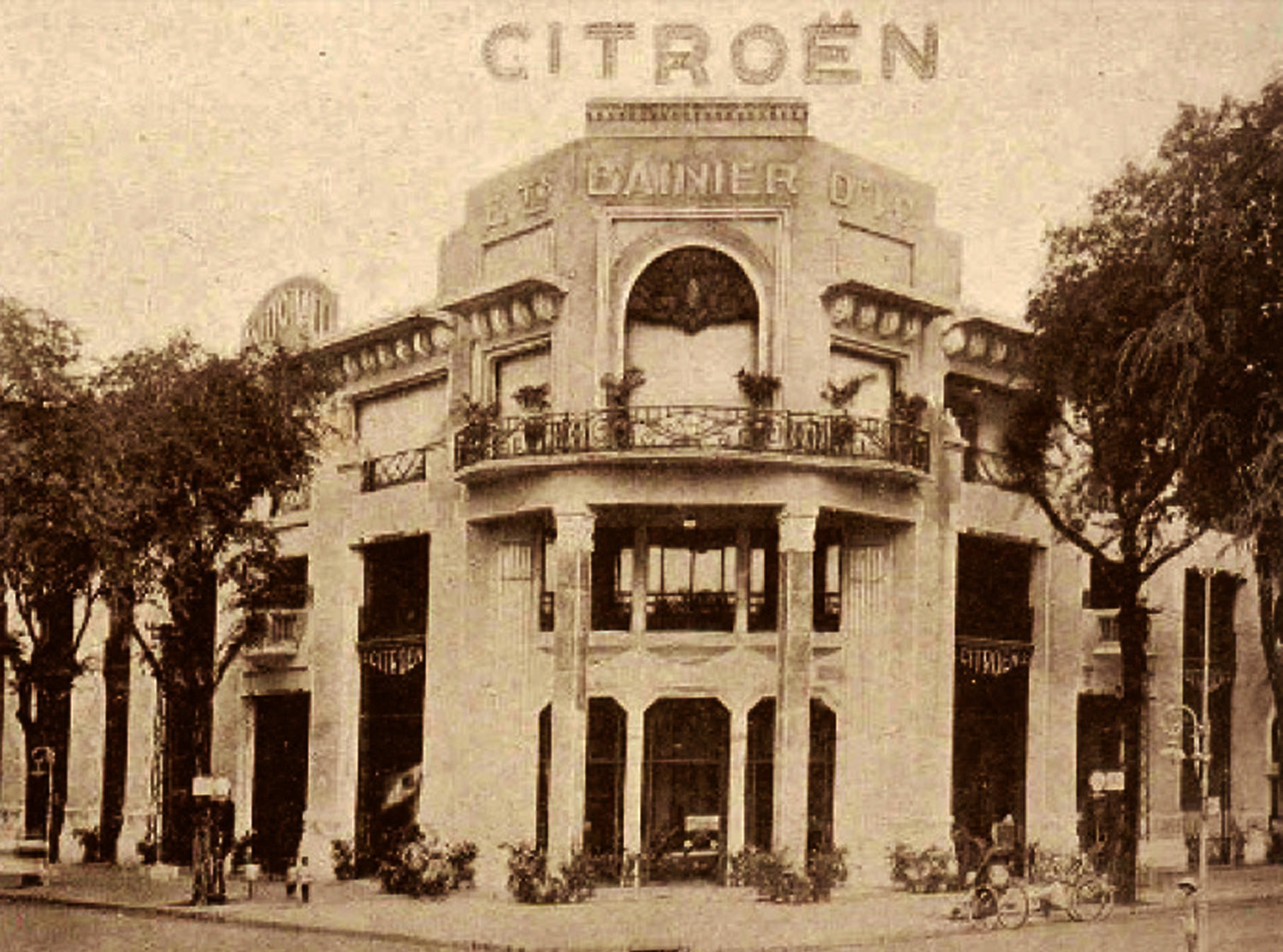
The Établissements Bainier Auto Hall, pictured soon after it opened in 1927.
This article was published previously in Saigoneer http://saigoneer.com
While foreign visitors still flock to the famous Rex Hotel, few have heard of the Établissements Bainier Auto Hall which preceded it, a building once feted as the greatest automobile dealership in Asia.
Little is known about the early life of company founder Émile Bainier, other than the fact that he was a skilled mechanic who arrived in Saigon and set up his own business in around 1908.
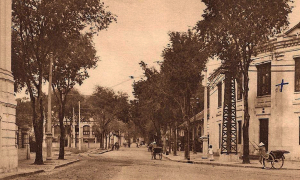
Rue Paul Blanchy [Hai Bà Trưng street], viewed from place Francis Garnier [Lam Sơn Square].
In 1911, Bainier became the Director of the Garage Ippolito, a Peugeot dealership run by the Société d’automobiles Ippolito et Cie, which had made its name in 1901 by launching the very first automobile courier service from Saigon to Phnom Penh. However, in 1914, Bainier parted company with the Garage Ippolito and set up his own business, the Société Anonyme des Établissements Bainier. Initially based at 40 boulevard Bonnard, it specialised mainly in electrical and electro-mechanical equipment, but also sold auto-pousses and voiturettes (miniature automobiles).
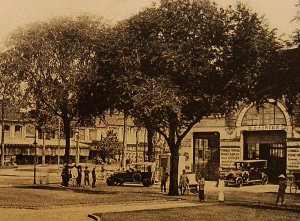
The first Établissements Bainier Auto Hall at 21 boulevard Bonnard and 100-102 boulevard Charner, situated diagonally opposite the company’s later premises.
By 1920, the Société Anonyme des Établissements Bainier had moved to more imposing premises, the first Établissements Bainier Auto-Hall at 21 boulevard Bonnard [Lê Lợi boulevard] and 100-102 boulevard Charner [Nguyễn Huệ boulevard], where it became a full-blown automobile dealership, advertising itself as the exclusive agent for Darracq, Unic, Dodge Brothers and the recently-established Automobiles Citroën.
The company also acquired a fleet of service vehicles, and in 1922 it won the concession to run the thrice-weekly Saïgon-Phnom Penh bus and postal service, which departed from the Saigon Post Office at 6am on Tuesdays, Thursday and Saturdays. By this time, the company also had a large branch office in Phnom Penh, which launched the first metered Citroën taxi service in that city in 1925.
Unfortunately for Bainier, the reputation of his business sustained some damage in June 1926, when the Écho Annamite newspaper reported the case of a wealthy Vietnamese man who had bought a brand new Citroen 10CV car from the Bainier Auto-Hall. When he complained that it was not ready for collection at the agreed time, the man was subjected to racist comments by one of the European garage staff. In response, Bainier was obliged to issue a public apology and to declare in the newspaper that his company made no distinction between local and European clients and that, in fact, most of its sales were to local people.
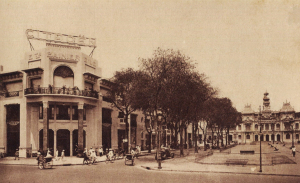
Another view of the Établissements Bainier Auto Hall, soon after it opened in 1927.
Despite this minor PR setback, the company’s sales and earnings increased steadily throughout the 1920s, largely due to its exclusive dealership of the increasingly sought-after Citroën marque. In 1926, seeking to build upon this success, Bainier commissioned the construction of a brand new Auto-Hall, situated diagonally opposite the old one at the junction of boulevards Charner and Bonnard.
The new Établissements Bainier Auto-Hall was inaugurated in March 1927 amidst great fanfare. According to a report in the Écho Annamite newspaper of 21 March 1927, the new premises were located just across the road from the recently-opened Grands Magasins Charner, “of which they constitute a beautiful and worthy counterpart,” and “occupied the entire block leading up to rue d’Espagne [Lê Thánh Tôn street].”
“It has been said of the new Bainier garages that they are the most beautiful in the Far East, and that they yield nothing to similar ultra-modern buildings in proud America,” continued the press report. “Skeptics might think that this is pure advertisement. Well, they would be wrong, because we believe that it would be impossible to design garages more elegant or better suited to the purpose for which they are intended. Imagine a gigantic hall, with no columns obstructing the central area, where air and light circulate profusely, without recourse to a glass roof… Here, a system of overlapping corrugated roofs lets in the bright light of the tropical sun without any risk to the employees who work in the building. The builder has indeed created a masterpiece.”
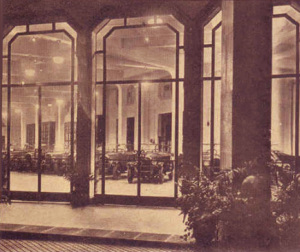
The “Grand Hall Bainier” viewed through its windows.
By this time, Établissements Bainier had branches in Saigon, Hà Nội, Tourane, Huế and Phnom Penh, totalling 16,800m² of floor space and employing a workforce of 25 Europeans and 300 local staff.
The remarkable design of the new Établissements Bainier Auto Hall in Saigon was reported widely by both local and international press, and the building quickly became an attraction in its own right. On 19 November 1927, the new “Grand Hall Bainier” was “generously made available” for a grand society ball organised to raise money for victims of the Great War. Then in 1928, the Paris newspaper La Lanterne reported that “His Majesty King Monivong of Cambodia, visiting the city of Saigon, stopped to visit the largest garage in the Far East, that of M Émile Bainier, exclusive concessionnaire of Automobiles Citroën in Indochina.”
The following year, 1928, was one of the company’s most successful, thanks mainly to the “great sensation” caused by the release of the brand new six-cylinder Citroën C6, with its “moderate price and exceptional qualities.” The car sold spectacularly well in Cochinchina, and in that same year, Bainier himself was awarded the Order of the Légion d’Honneur for his services to the colony.
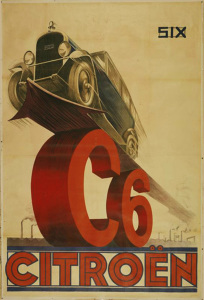
An advertisement for the six-cylinder Citroën C6 of 1928, one of the Établissements Bainier’s best-selling vehicles.
With the onset of the Great Depression in 1929, the company suffered a drastic loss of income, obliging it to downsize its operations. According to the annual reports of its Conseil d’Administration, the Société Anonyme des Établissements Bainier recorded significant business losses throughout the period 1931-1935. But the biggest blow came in 1933, when it lost the prized Citroën concession.
Établissements Bainier did not return to profitability until the late 1930s. By that time it had become the main Indochina dealer for Unic, Delahaye, Rosengart, Motoconfort and Mobylette cars and motor cycles. However, having lost the prestigious Citroën dealership, it never recovered its former pre-eminence.
For Émile Bainier, the 1930s were difficult years. When he died in early December 1941, the troubles of that period were alluded to by a brief obituary in Le Nouvelliste d’Indochine, dated 14 December 1941:
“Saigon has learned with great sadness of the death of M Émile Bainier, President and founder of the Société Anonyme des Établissements Bainier. We’ve lost one of our oldest residents, who has worked hard in this country for over 30 years, and his demise leaves deep regrets. A man of duty, honest, sometimes stubborn, but always fair and good, he was typically a self-made man who built his own destiny. He brought a remarkable lustre to the Cochinchina automobile industry and, like so many others, suffered many adversities without complaining. Through his hard and intelligent work, he repaired the damage which had been inflicted on his business. This was his last satisfaction.”
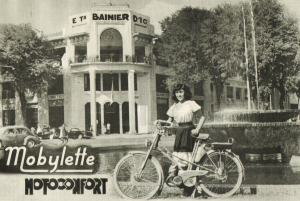
A Mobylette advertisement of the early 1950s.
Bainier’s widow and her son Jacques Bainier continued to run the Établissements Bainier for the remainder of the colonial period, but some time after 1953 the garage was closed and the family sold up and returned to France. The new owners, Prince Nguyễn Phúc Ưng Thi and his wife Nguyễn Thị Nguyệt Nga, had the old building demolished and hired local architect Lê Văn Cấu to design in its place the six-storey Rex Hotel, Commercial Centre and Cinema. Following its completion, most of the complex was leased to the Americans. And the rest, as they say, is history.
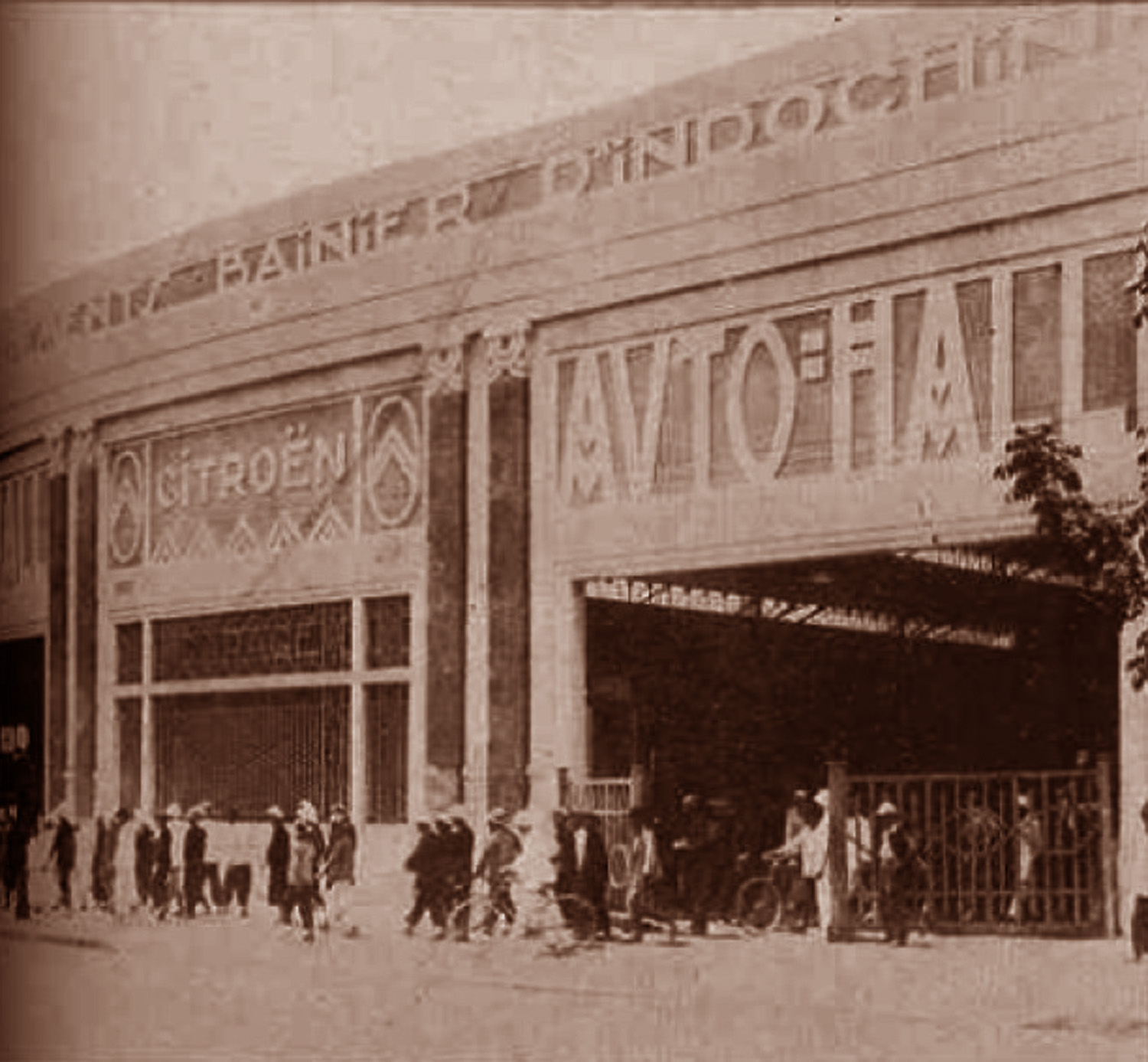
The exterior of the Établissements Bainier Auto Hall.
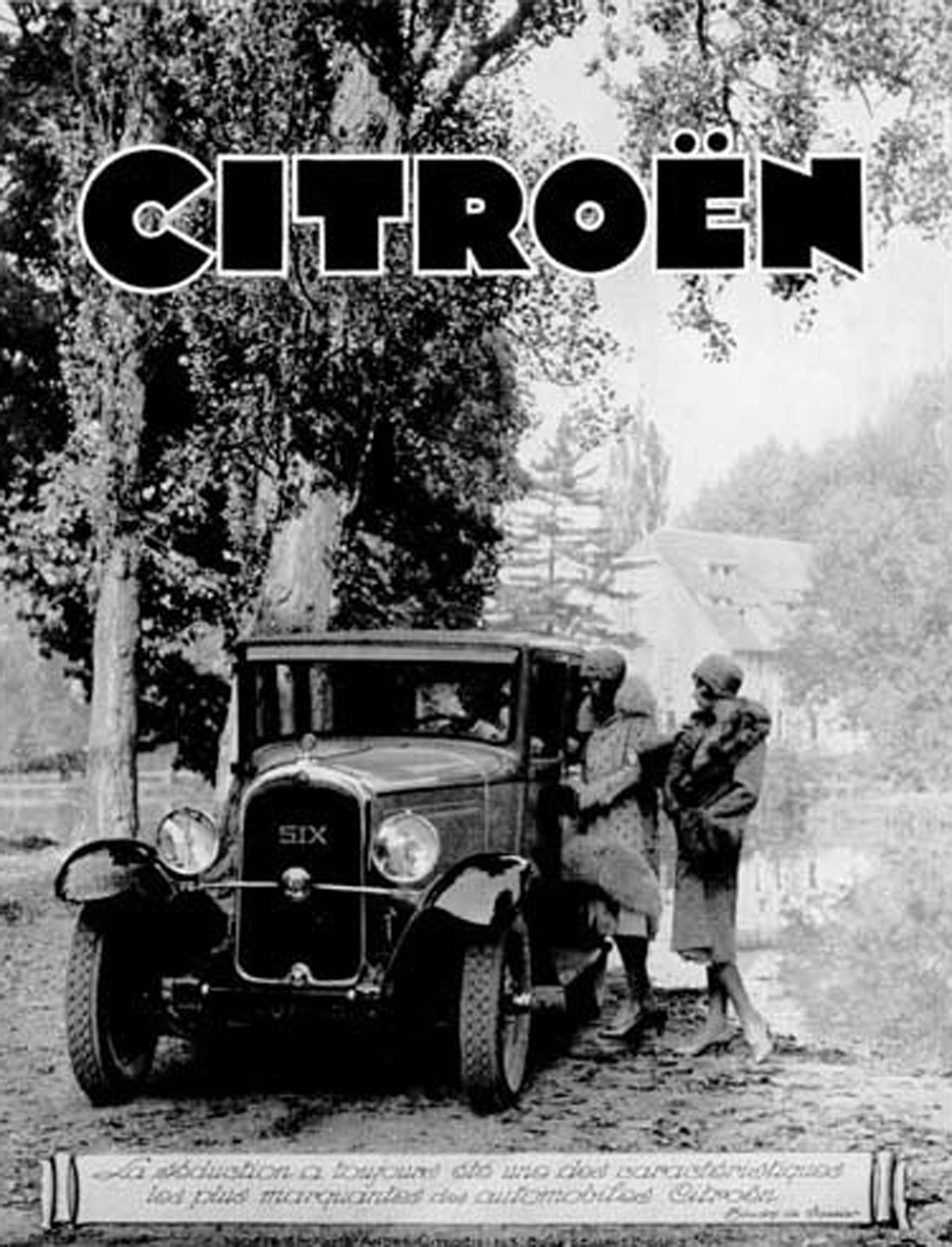
The Citroën C6 of 1928, one of the Établissements Bainier’s best-selling vehicles.
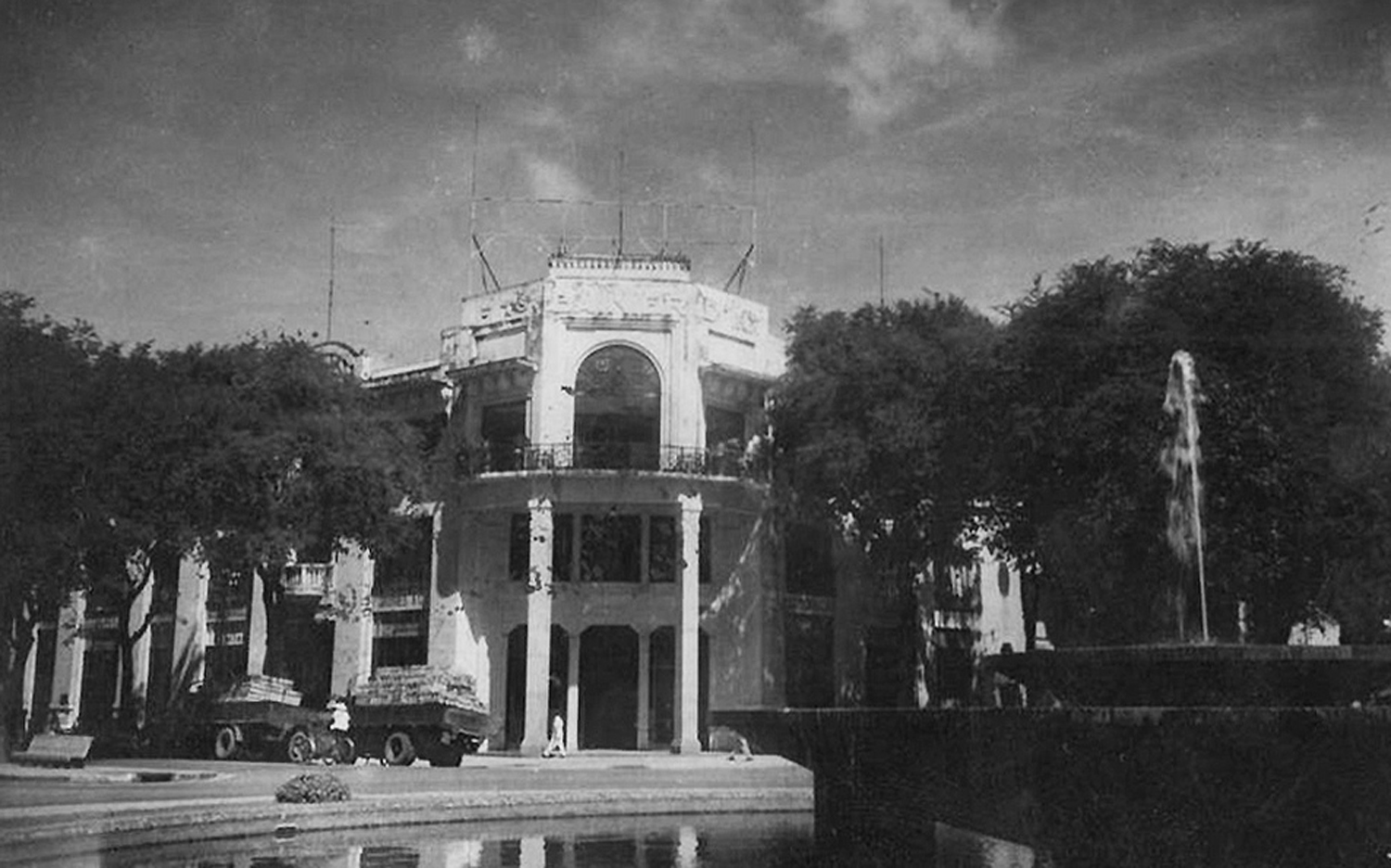
The Établissements Bainier Auto Hall in the early 1950s.
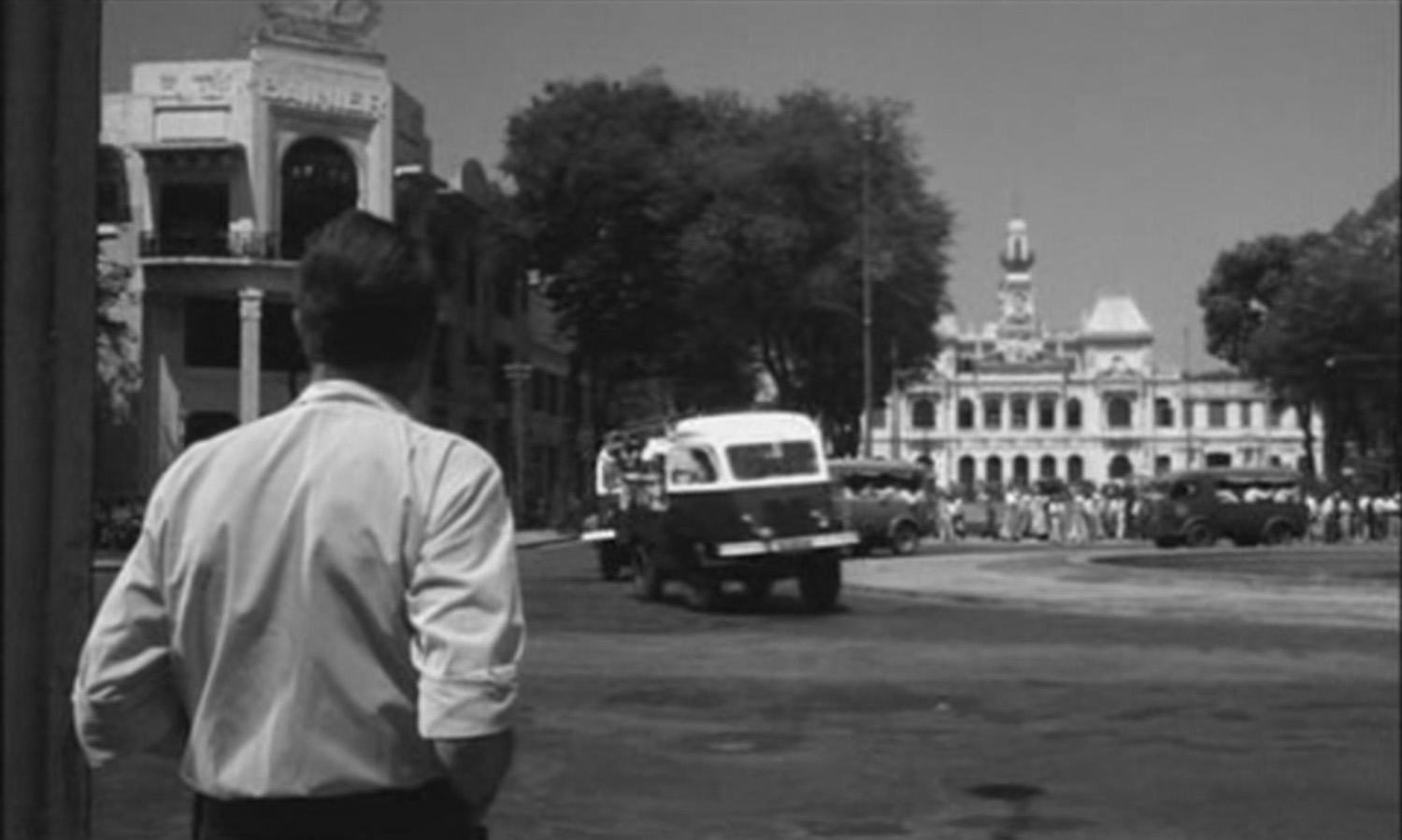
In this scene from the 1958 Joseph L Mankiewicz film of Graham Greene’s The Quiet American, Thomas Fowler (played by Michael Redgrave) stands outside the “big store on boulevard Charner” to witness the events of “Operation Bicyclette.” At the time the film was made, the Établissements Bainier Auto Hall was about to be demolished.
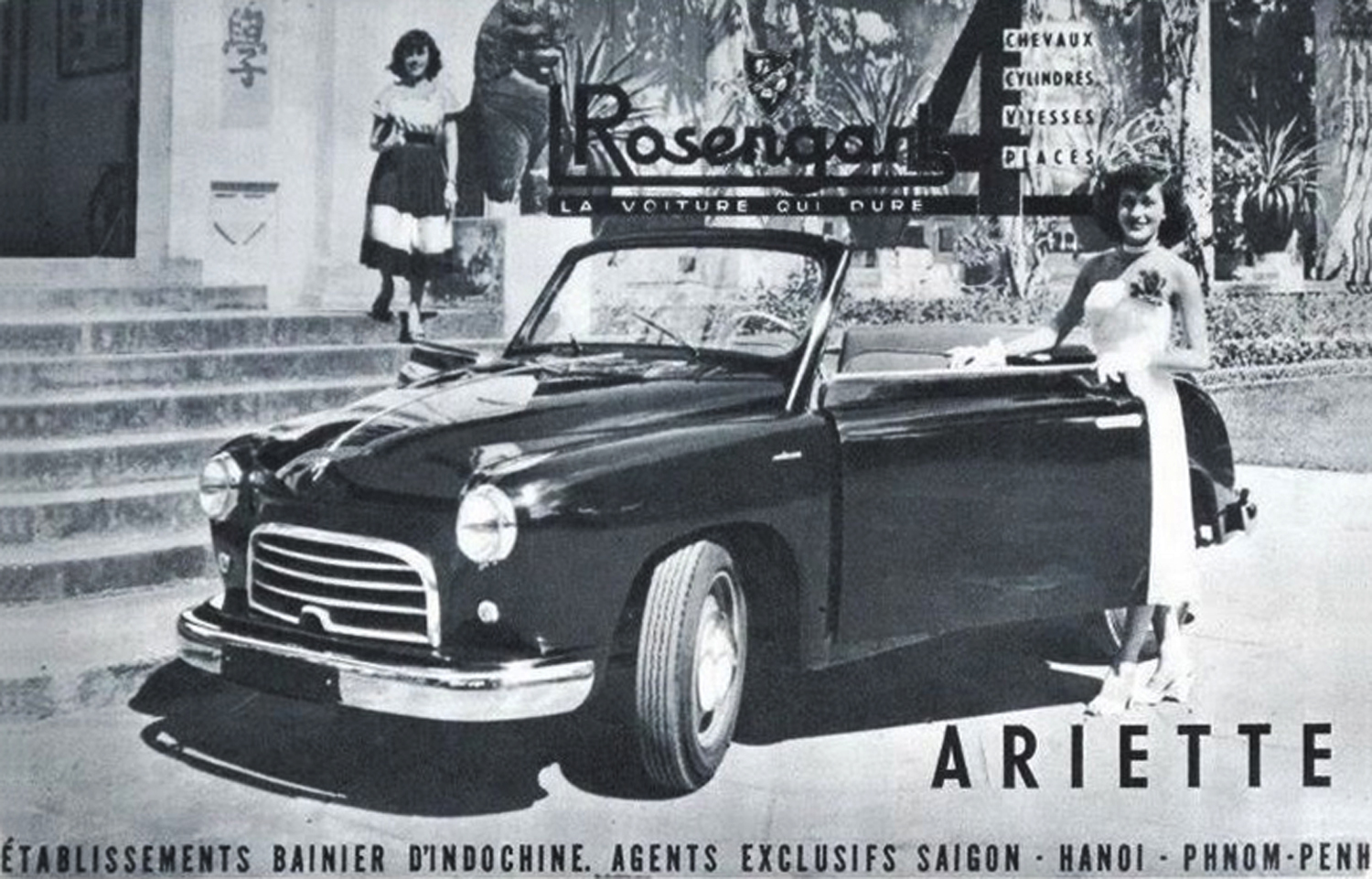
A Rosengart advertisement of the early 1950s.
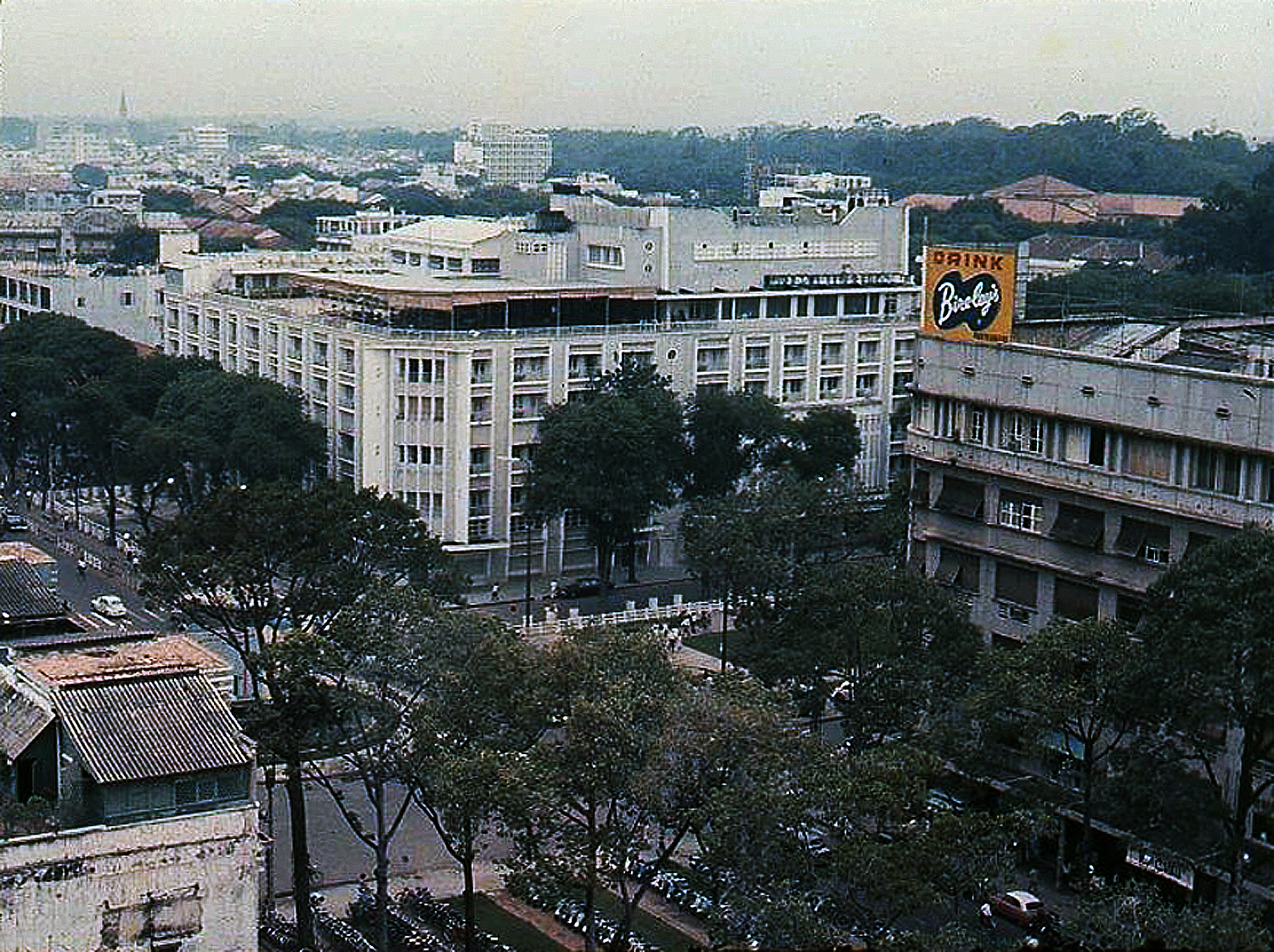
The Rex Hotel Complex which replaced the Établissements Bainier Auto Hall in 1959, pictured in 1965.
Tim Doling is the author of the guidebook Exploring Saigon-Chợ Lớn – Vanishing heritage of Hồ Chí Minh City (Nhà Xuất Bản Thế Giới, Hà Nội, 2019)
A full index of all Tim’s blog articles since November 2013 is now available here.
Join the Facebook group pages Saigon-Chợ Lớn Then & Now to see historic photographs juxtaposed with new ones taken in the same locations, and Đài Quan sát Di sản Sài Gòn – Saigon Heritage Observatory for up-to-date information on conservation issues in Saigon and Chợ Lớn.

